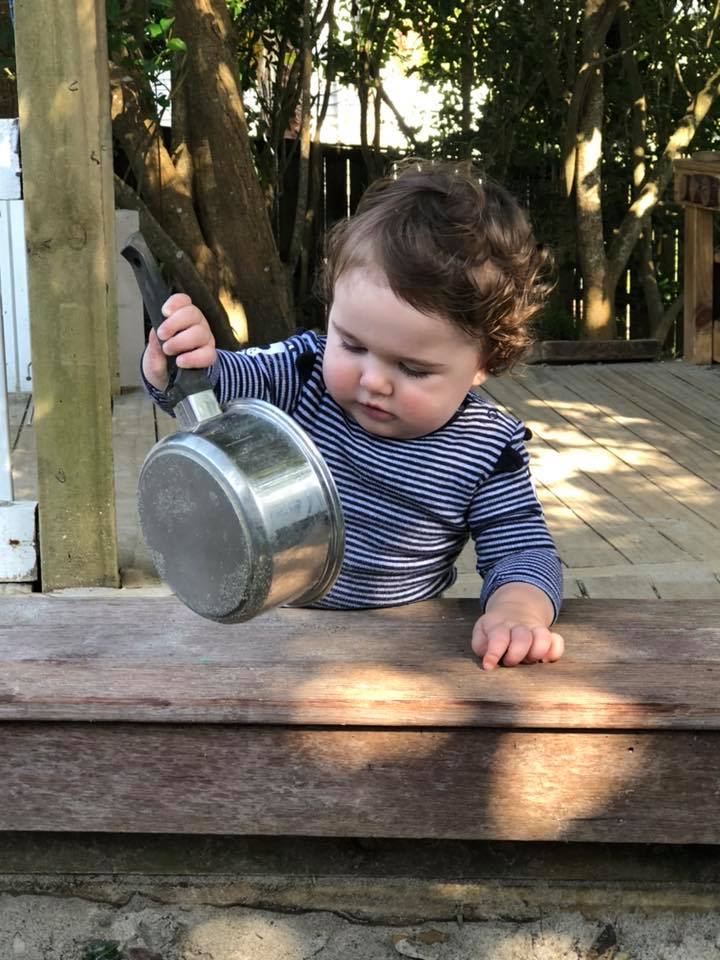Working within a child-led philosophy, we trust that children will let us know when they are ready to move to another space, and because of this, we have no allocated age that children move from the infant’s space, to the toddlers.
There’s no set age, there’s no set stage – if they want to go, then they are free to do so. Apart from meal times, our gates are normally left open, and our infants are free to explore the toddler area if and when they choose.
Our infants love to crawl/shuffle/walk down the ramp, taking themselves downstairs to play, as toddlers come up; looking for a quiet and cosy space to explore. As the children ask to go downstairs more and more often, there generally reaches a point where they are more comfortable being in the toddler environment; enamoured by the experiences to be found downstairs (and are thus considered as having transitioned).
At Folkestone Street, we know that when children learn to transition effectively at an early age, that they then approach later transitions with confidence and resilience (Education Review Office, 2015). Because of this, we trust their ability to know when they are ready, and approach this transition, and move to this new space in their own time.
Some children take longer than others to transition – and that’s okay! There should be no rush, pressure or anxiety added to this situation – after all, it should be the child’s choice – and they feel secure in knowing that they can return to the infant area when they need to.
However, because our infants’ are regularly immersed in the outdoor environment with the toddlers, majority of the time they are eager to spend as much time in this space as possible, and often transition relatively quickly.
Separating children by age is an archaic process, and research shows that when children are allowed to play with and where they want, irrespective of age ‘children engage in, and learn from, activities that they could not do alone or only with age-mates’ (Gray, 2008). In a ‘whanau setting’ (Sands, 2018), children are supported in engaging in tuakana/teina [older sibling/younger sibling] relationships; our toddlers become skilled caregivers, and our infants are supported into their ‘zone of proximal development’ (Vygotsky, 1978, as cited by Gray, 2008), with each group experiencing ‘equitable opportunities for learning, irrespective of… ability [or] age’ (Ministry of Education, 2017), playing, and learning as equal contributors to this space.
We love the interactions we see between children in our ‘whanau setting’, and the learning that develops from mixed-age opportunities.
Education Review Office [ERO]. (2015). Continuity of learning: transitions from early childhood services to schools. Retrieved from https://www.ero.govt.nz/…/ERO-Continuity-of-Learning…
Gray, P. (2008). Why we should stop segregating children by age. Retrieved from https://www.psychologytoday.com/…/why-we-should-stop…
Ministry of Education. n.d. Communities of learning. Retrieved February 2, 2019, from https://www.education.govt.nz/communities-of-learning/
Ministry of Education. 2017. Te whāriki: He whāriki mātauranga mō ngā mokopuna o Aotearoa Early childhood curriculum. Retrieved from https://tewhariki.tki.org.nz/…/Te-Whariki-Early…
Sands, L. (2018, November). Unlocking the gates, dismantling fences! In R. Christie & T. Christie (Chair), Yeah Baby. Conducted at Ellerslie Convention Centre, Auckland.

